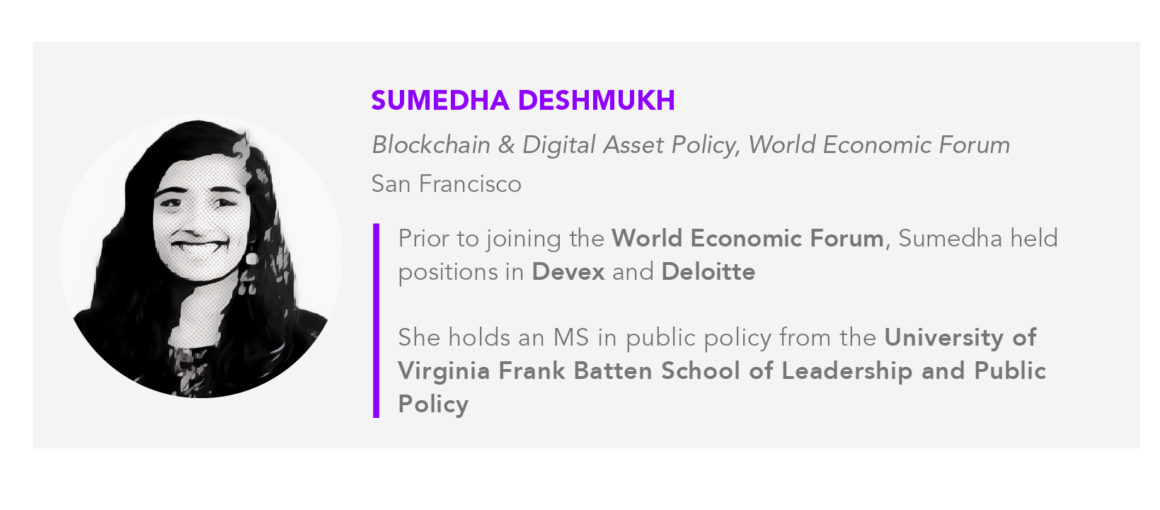2020 has been a big year for blockchain. We saw US$4.3 billion in blockchain spending. Bitcoin rallied steadily, seeing all-time highs. Major institutions, including PayPal, Square, and Visa made high-stakes announcements around crypto. Ethereum 2.0’s Beacon Chain launched earlier this month.
But a major industry problem remains: the lack of harmonization in technical standards and regulation threatens broad-based adoption and progress.

With the excitement around the technology, there is inevitably a flurry of activity from all sides, including technical standards-setting entities, regulators and policymakers, and industry consortia. However, little work to date has been done to understand the landscape of blockchain and digital asset regulations and standards.
Who are the major players? Where are there gaps and overlaps? What has been standardized and regulated — and where is this activity unwanted or premature?

Understanding the answers to these questions — and the picture they paint when considered holistically — is critical in outlining a path towards universally accepted standards, which will allow the ecosystem to continue scaling and progressing.
In fact, leaders across the public and private sectors have noted standardization as a high priority are of focus. Governments, for instance, are keen to understand how to classify and regulate digital assets and blockchain technology, while businesses seek a common understanding to facilitate cross-industry and use case applicability of the technology.
With this in mind, the Global Blockchain Business Council (GBBC) and World Economic Forum (WEF) in partnership with blockchain and digital asset leaders across industry, academia, and industry consortia groups came together to release the Global Standards Mapping Initiative (GSMI).
The GSMI is an unprecedented effort to map and analyze data from over 30 standards-setting entities, 185 jurisdictions, and nearly 400 industry consortia. The final products include two reports (“Legal & Regulatory” and “Technical”) and an interactive map of blockchain and digital asset regulation and guidance.
The analysis found a number of key trends and insights:
Approaches to regulating blockchain and digital assets vary from country to country — so educating government officials remains critical.
Education is crucial in ensuring that regulators and other stakeholders grasp the value of the technology, and enact principle-based regulatory regimes focused on the uses instead of the underlying technology. Doing so will enable regulators to build better, more sustainable models that remain relevant even as the technology continues to evolve.
For instance, jurisdictions such as France, Lichtenstein, and Jersey are interested in regulating uses of the technology, rather than the technology itself. Notably, many that fall into this camp are all small states. France has also relied on requests for comment and consultation. Proponents of this approach laud the consultation phases, arguing that they allow regulators to consider diverse perspectives from stakeholders and identify the most functional framework possible.
Alternatively, Japan’s Financial Service Agency (FSA) has created a self-regulatory body, Japanese Virtual Currency Exchange Association (JVCEA), to oversee the cryptocurrency space. This unique approach to regulation, according to an unnamed FSA official has been chosen given that “it’s a very fast-moving industry. It’s better for experts to make rules in a timely manner than bureaucrats do.”
As part of their development and approach to regulating blockchain and digital assets, several countries have chosen to rely on regulatory sandboxes. The United Kingdom was the first country to deploy this model and the results are promising. According to a report published by the UK’s Financial Conduct Authority (FCA) in October 2017, 90% of companies in the UK’s first cohort of sandbox participants who successfully completed tests continue to operate in the market. The FCA’s global regulatory sandbox project aims to remove global regulatory boundaries; however, the reviews of sandboxes are mixed among industry players.
Fragmentation exists within countries and jurisdictions as well.
The fragmentation of approaches, both worldwide and within certain jurisdictions, is both indisputable and unsurprising.
For example, the web of U.S. federal and state laws and regulations has led to a complicated regulatory landscape for digital assets. This is perhaps most evident in the differing rulings of state regulators on whether certain digital asset businesses need to obtain a money transmitter license.
Moreover, policymaking and regulation of digital assets has, in some cases, been largely reactionary. In the wake of the 2018 crypto trading boom in South Korea, the Justice Ministry announced that it was planning to close the country’s exchanges amidst what it deemed speculation of cryptocurrencies. Ultimately, plans to ban exchanges were met with severe pushback and the government reversed plans to institute an outright ban. Since then, the government has largely reversed course demonstrating an increased acceptance of digital assets and blockchain, moving to regulate cryptocurrencies in line with FATF standards and provide a framework for legalization of exchanges.
Definitions and taxonomies remain a challenge.
Something as seemingly straightforward as defining blockchain, digital assets, and cryptocurrencies is, in reality, quite complex. This makes building functional regulatory frameworks challenging — and can have ripple effects throughout the standards development and implementation process.
Take for example, the definition of “blockchain” from ISO (International Organization for Standardization) and ITU-T (International Telecommunication Union’s Telecommunication Standardization Sector). ISO’s definitions notes “blockchains are designed to be tamper resistant and to create final, definitive and immutable ledger records,” whereas ITU-T’s says that blockchain is “hardened against tampering and revision.” While these differences may appear to be subtle, we may face issues as subsequent standards — for example, focused on specific technical elements or industry verticals — build upon these definitions.
The lack of alignment among industry players can also be confusing for regulators and policymakers, who rely on categorization and delineation for regulating blockchain and, especially, digital assets.
Taxonomies are beginning to move towards a set of common definitions thanks to industry bodies. However, confusing language remains a pain point. The broader community, and particularly industry groups, must prioritize finding greater consensus on common definitions and taxonomy.
Some standards may be premature or unnecessary.
It is, however, important to note that there may be aspects of the technology that are not yet mature enough for standardization. Moving towards standardization too early may stifle innovation or lead to skewed or adverse incentives.
Without a thoughtful strategy around their development, standards could be developed to the goals of certain companies, rather than for the benefits and needs of the wider user base.
Additionally, standards are optional by nature and blockchain network governance introduces a new set of challenges, given that philosophical debates remain and much of the adjudication happens directly within the developer community.
As such, it’s important to focus standards-setting initiatives on demand signals from industry and the technical community — and to ensure diverse representation of these actors along the way.
Looking ahead to 2021
As we move into 2021, these conversations will only become more important, and the GSMI will continue to evolve and develop beyond this initial release. Key areas of focus as the GSMI moves forward will include a deeper dive into taxonomy, an important first step in achieving greater harmonization; developing regulatory reporting and derivatives frameworks; and, continuing to update and expand jurisdictional coverage.
Blockchain is a “team sport” that will require multi-stakeholder collaboration to be successful. GSMI version 1.0 was the result of an industry-wide effort toward greater harmonization and clarity surrounding standard-setting. As the GBBC and its 2021 partners work toward developing the roadmap and working groups towards GSMI version 2.0, we encourage interested parties to get in touch with us at gsmi2021@gbbcouncil.org.




